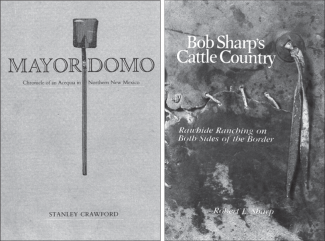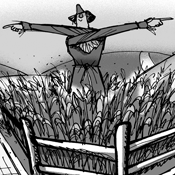In 2018, Congress must reauthorize the Farm Bill. Even in a polarized Washington, the measure represents a unique opportunity to bring disparate parties together to help the sector achieve meaningful reductions in carbon emissions and boost rural economic opportunity
The new Farm Bill that will occupy Washington next year presents a unique chance to make progress on two critical issues: addressing climate change and enhancing economic opportunity for America’s farmers, foresters, and ranchers. Congress should lift its sights and consider new and aggressive ideas to reward and incentivize these businesses for taking advantage of market and technology innovations that utilize the carbon-reduction potential of the U.S. agricultural sector.
This article makes the case for why it is both economically wise and politically practicable for Congress to take this approach, by establishing a major new reverse-auction payment mechanism for agricultural enterprises that undertake cost-effective carbon reduction and storage measures on their land. If done right, this approach could help spur a new “carbon farming” industry by establishing a robust and rigorous agricultural marketplace in the United States for the chemical that combines with oxygen to form the most common greenhouse gas. At the same time, Congress should significantly scale up the federal agricultural research and development budget, to encourage greater innovation in the farm sector with a focus on improving productivity and resilience, producing more on fewer acres, increasing potential revenue to landowners, and keeping America competitive in global agriculture markets.
There are at least three reasons why the timing for progress on carbon reduction in the agricultural sector is ripe.
First, the agricultural sector provides carbon reduction opportunities that work. To understand how, take one example: soil tends to naturally contain and store organic matter. Various agricultural practices including intensive tillage that exposes soil to air can release carbon dioxide to the atmosphere.
Yet modest changes can yield a different result: through a variety of activities such as no-till or reduced-till agriculture — when seeds are drilled directly through crop residues into untouched soil — more carbon remains in the ground rather than in the atmosphere. Other farming practices with similar effect include the use of cover crops and residue management, planting field borders and other areas with perennial grasses and other native plants, and bolstering crop rotations with carbon storage in mind. There are also many additional opportunities beyond cropland that can increase carbon on working agricultural land, including for example sustainably managing grazing practices on pasture and rangeland, integrating more trees into field borders and stream banks, and restoring forests on marginal lands.
And it turns out that these types of land-sector carbon-reducing practices are not only feasible, but quite cost effective. Last year, the United States released a Mid-Century Strategy for Deep Decarbonization, which was designed “not to predict near-term policymaking [or] model the future U.S. energy and land sectors with precision . . . but rather to describe key opportunities and challenges . . . and highlight findings that are robust across scenarios.” One such finding was the continued and enhanced role of the U.S. land sector as a net carbon sink.
The MCS analysis estimated that, by 2050, land-sector and other carbon-removal technologies could sequester 30 to 50 percent of emissions across the economy, while carbon-beneficial forms of biomass could also displace fossil fuel consumption in sectors that are harder to electrify, such as aviation and heavy-duty vehicles. These reductions could take the place of reductions in the electricity sector or elsewhere that would come at a greater cost. On the other hand, in a scenario where the land sector is underutilized, the pressure to cut emissions shifts to other parts of the economy at a significantly higher cost per ton of carbon.
Second, the economic returns for farmers, foresters, and ranchers of a robust, market-based land-sector emission-reduction strategy could be significant and timely. According to the U.S. Department of Agriculture, net farm income in 2017 is down nearly 25 percent from 2015 levels. This decline reflects a growing set of structural challenges facing the U.S. farm sector. A Kansas City Federal Reserve Bank analysis found recently that American farmers are becoming “increasingly reliant on international demand and exports to support domestic prices and farm incomes,” and are challenged by “reduced farmland values,” “weaker credit conditions,” and “increased interest rates and collateral requirements.”
These trends are especially problematic given the slow rebound of employment and wages in rural areas. According to USDA, while employment in metropolitan areas exceeded its pre-recession peak by nearly 5 percent by 2016, employment in nonmetropolitan areas was still nearly 3 percent below its respective peak. Adding to the economic challenges are demographics — the average American farmer is 58 years old, nearly the oldest out of all U.S. professions. New revenues, markets, and skilled jobs are needed to attract the next generation of landowners and managers.
Together, these economic factors reinforce the need for economically efficient policies that help the agricultural center modernize and improve financial returns for farmers, foresters, and ranchers.
Third, the United States is falling behind in the global race for the type of technology-enabled progress in agriculture that carbon farming and sustainable land-sector management represent. The types of R&D that increase agricultural productivity also tend to decrease agricultural carbon intensity, while freeing land to support more forests, biomass production, or high-value natural areas. For example, precision agriculture, which can depend on greater utilization of sensors, drones, big data, and automation, can seed huge carbon reductions — just as it boosts farm productivity overall.
Despite this potential, public agricultural R&D investment in the United States has fallen in real terms over the last decade and a half and has fallen considerably as a share of total public R&D spending in the United States over a longer period. While private agricultural R&D investment has grown in recent years, private R&D dollars are not a substitute for the publicly funded basic research that drives innovation advances.
In 2015, USDA’s Economic Research Service modeled scenarios with different levels of public investment and found that slowdowns in support lead to a significant innovation gap within two decades. Specifically, if the current approach to public investment persists, the growth of agricultural total factor productivity drops dramatically — by almost 40 percent. The analysis concluded that, once depressed, such productivity will be significantly harder to make up by too-little, too-late investments in R&D.
While the United States is slowing down on agricultural R&D, others are not. Over roughly the last two decades, the U.S. share of public investment by major countries in agricultural R&D “fell from 22.5 percent to 13.4 percent.” In particular, the United States has fallen behind Chinese public investment in agricultural science. According to USDA, China passed the United States in public investment in 2008 and has kept focused on the field — following what historically has been a uniquely American playbook. Between 1990 and 2013, Chinese public investment in agricultural R&D grew eight-fold. As a result, U.S. leadership on technology-enabled agriculture is faltering at a moment when the global agricultural market is poised to grow dramatically.
Fortunately, there is a way to simultaneously address these climate, economic, and innovation challenges.
Economists have long acknowledged that the most economically efficient way to reduce greenhouse emissions is to place an economy-wide price on carbon. Modeling suggests the American land sector has the potential to deliver up to 1.2 billion metric tons of carbon dioxide equivalent reductions annually in a $40-per-ton carbon-reduction scenario, similar to anticipated reductions in the energy sector. This underscores the fact that there are clear, cost-effective emissions reductions to be gained from the land sector if appropriate policy mechanisms are in place to drive them. It also reinforces that, in the current environment, where the United States has no economy-wide carbon price and there is no effective nationwide market for land-sector carbon offsets, we are under-incentivizing land-based sequestration activities.
In the absence of an economy-wide policy, the most scalable approach would be to create a new, nationwide program of direct payments and credits to producers who effectively sequester and store carbon. This approach could be implemented in two ways. In states that have established carbon markets, sequestration policies in the land sector can offset carbon emissions reduction obligations of energy-sector entities. California, for example, already allows 8 percent of carbon compliance to come from offsets, including from agriculture.
Such a pay-for-performance model could also be implemented by the federal government — kickstarting action in states that don’t have economy-wide carbon prices and increasing ambition in states that do. Specifically, the federal government could run reverse auctions to make carbon payments to carbon-sequestering projects, using mandatory funds authorized through the Farm Bill.
Such a model is not without precedent. Australia, for example, has a voluntary carbon offset program for farmers called the Carbon Farming Initiative, which after its first years of implementation was rolled into an economy-wide carbon-pricing scheme. Under the CFI, farmers can earn credits for activities like “reducing livestock emissions, increasing efficiency of fertilizer use, enhancing carbon in agricultural soil [and] storing carbon through revegetation and reforestation.” These credits can then be sold to other parties to meet their carbon obligations. While the CFI has been challenged by underfunding and a continuously evolving policy context, over 500 land-based projects have been registered to date, and hundreds more across on-farm energy-saving and fuel-reduction practices. We would need to design a system that works for American stakeholders, but we can learn from the experiences of other countries in launching these programs.
Narrower but analogous programs also exist in the United States. California has forestry, livestock, and rice methane offset protocols as part of its economy-wide cap-and-trade program, under which 173 projects have registered to date. At the federal level, USDA’s Environmental Quality Incentives Program provides hundreds of millions of dollars annually in financial and technical support to farmers engaging in conservation practices that “improve soil, water, plant, animal, air and related natural resources on agricultural land and non-industrial private forestland.” Although EQIP payments are not made on a carbon basis, they support many of the same practices that could qualify under a carbon-payment scheme.
One of the biggest pitfalls identified from Australia’s experience is that uncertainty regarding the availability of annual funding can distort an effectively functioning market. If farmers don’t have a long-term and significant price signal, it is harder for them to justify upfront investments in emissions reducing technologies and techniques. In the U.S. context, providing mandatory funding in the Farm Bill over a 10-year window would help address this concern and would also reduce the risk that farmers simply “pull forward” the lowest-hanging-fruit actions that would have taken place just a few years later — the problem of additionality. A certain and long-term funding source would promote efficient improvements as well as provide enough lead time to finance complementary investments.
A second challenge in establishing an effective market-based payment program is compensating carbon reductions on an apples-to-apples basis across different practices, land-sector types, and regions. Carbon-accounting rules that define eligible practices, ensure additional carbon is being stored or reduced, and provide guidance on how to ensure lasting carbon benefits, can be developed to ensure agricultural activities are being treated robustly and equally throughout the program. Many such protocols already exist in California and under voluntary credit registries like the Voluntary Carbon Standard and American Carbon Registry.
A third challenge is avoiding payments for “hot air,” or emissions reductions that would have occurred even without an offset mechanism. We know there are ways to deal with this issue. For example, in California’s rice farming protocol, farmers who voluntarily participate are required to produce emissions estimates based on historical farm area, crop yield, agricultural techniques, and other measures. They then submit records to calculate emissions reductions once they begin one or more of the three authorized management practices (dry seeding, early drainage, or alternate wetting and drying).
Over the long-term, policymakers should strive for a maximally accurate program that builds on California’s approaches by measuring actual emissions at each farm, compared against a baseline. The federal government and state governments could play an important role in providing farmers with the resources to more easily follow these measurements in real time with advanced monitoring equipment and tracking software. The next generation of carbon tracking and reporting is already under development with support from programs like USDA’s Conservation Innovation Grants.
A final concern is that applying a crediting mechanism to one sector of the economy raises the specter that you end up replacing emissions in the American agricultural sector with emissions elsewhere. This effect, known as leakage, could happen, for example, if U.S. timber prices increased because this program had the effect of decreasing U.S. timber supply and, as a result, global markets demanded more deforestation in other parts of the world, like the Amazon.
A government analysis of Australia’s CFI indicated little reason to suspect significant leakage to date in the program. However, as activities are deemed eligible or ineligible for credit under the program, potential and actual leakage should be fully analyzed and considered. If the United States enacts this program domestically, ultimately the most effective way to fully mitigate leakage risk is to bring as many countries and sectors into the fold as possible, which U.S. policymakers could work on through the existing United Nations climate change negotiations process.
While there will be some investment of time and federal resources needed to develop a reverse auction program as well as expand and strengthen the available suite of rigorous measurement protocols, these actions are critical to unlocking the full potential to reduce carbon emissions from the land sector and even sequester carbon. Within the federal government, this work should be undertaken through cooperation between the Environmental Protection Agency and USDA. Based on experiences elsewhere, however, we know that building a program that serves as a sufficient market signal, compensates emissions reductions on an apples-to-apples basis, maximizes additionality, and avoids leakage is within reach.
In addition to a new market mechanism, policymakers should use the Farm Bill to accelerate the pace of agricultural innovation by improving the techno-economics of low-carbon practices. Public investment in agricultural R&D is a key ingredient of that innovation equation — to lead globally, the United States must steadily and substantially increase USDA and other agencies’ budgets for agricultural R&D by a factor of three by 2030 and focus those efforts on advancing the technologies that will unlock new possibilities in carbon farming and sustainable land-sector management. This will allow the United States to close the public investment gap with China and reestablish itself as the go-to place for agricultural innovation.
To be sure, increasing the research budget is not sufficient. We must do so in a way that optimally promotes acceleration of innovation. The American energy R&D program provides a powerful playbook for how to build out an ecosystem for innovation. As outlined in the Mission Innovation Domestic Implementation Framework, the program is composed of four elements: “foundational mechanisms to increase breadth of knowledge within a scientific discipline”; “translational mechanisms to target incremental improvements along defined tech-roadmaps”; “disruptive mechanisms to validate high-risk, high-reward, off-roadmap ideas”; and “integrational mechanisms to facilitate collaboration across disciplines and stakeholders.” Our increased public investment in agricultural R&D needs to tend to each of these components within the agricultural ecosystem.
Fortunately, significant progress has already occurred. For example, USDA supports land-grant universities to spur foundational R&D by enlisting them in advancing “competitive peer-reviewed research, education, and extension activities through multiple programs, including the Agriculture and Food Research Initiative.” We can bolster the effectiveness of these programs by adding resources and increasing capacity at our national laboratories to focus on agriculture-oriented missions. To facilitate translational work, USDA can define and launch a new priority research effort to channel existing and new R&D resources toward ambitious productivity and resilience goals. The department should be given the green light to increase direct work with experts in other agencies who have begun to look at these important issues in recent years.
For example, ARPA-E, the Department of Energy’s advanced-research program, has already ventured into agricultural R&D where it shared a nexus with energy. We know this approach works to bring forward disruptive technology, so we should consider formally charging ARPA-E (or a similar capacity) to undertake this work on a systematic basis to advance our agriculture goals. Additional interdisciplinary teams like the ones at DOE and NASA can work with USDA to meet our goals for 21st century agriculture.
As with any innovative policy idea during this polarized era in Washington, some will question the political economy of this reverse auction and investment proposal because it is does not fit neatly into preconceived notions of coalition building in Congress and the administration. But this ignores the new coalition that it could attract if policymakers are willing to consider this proposal on its merits: legislators who are looking for policies to reduce emissions and legislators who are looking to bolster the incomes of farmers and rural Americans, all while helping America regain a global competitive advantage in a post-Paris marketplace that is looking for ways to feed a billion more people without breaking the planet.
For that new coalition to come together, Congress should take seriously the transparent stakeholder process that will need to occur for farmers, ranchers, and foresters and the rest of rural America to buy into this program and allow it to realize its climate and economic benefits. To bring and keep all relevant stakeholders to and at the table, the revenues from the auction must function as an incentive, not a mandate. This does not just make political sense, it makes economic sense as well. The social costs of carbon are already being borne by the economy. This auction is an approach to abating those costs in an effective and efficient way.
The process must engage the diversity of actors in the land sector; it must strive to develop workable solutions that all find fair (especially with regard to baselines and measurement, monitoring, and verification); and it must work with all key parties to avoid unintended consequences. We must also leverage state-level policies that support these aims and with which farmers are already familiar, harmonize with existing state-level policies like California’s cap-and-trade program, and spur a race-to-the-top to improve state-level policy. Ultimately, for this program to work, farmers, foresters, and ranchers will need to lead the way. TEF




